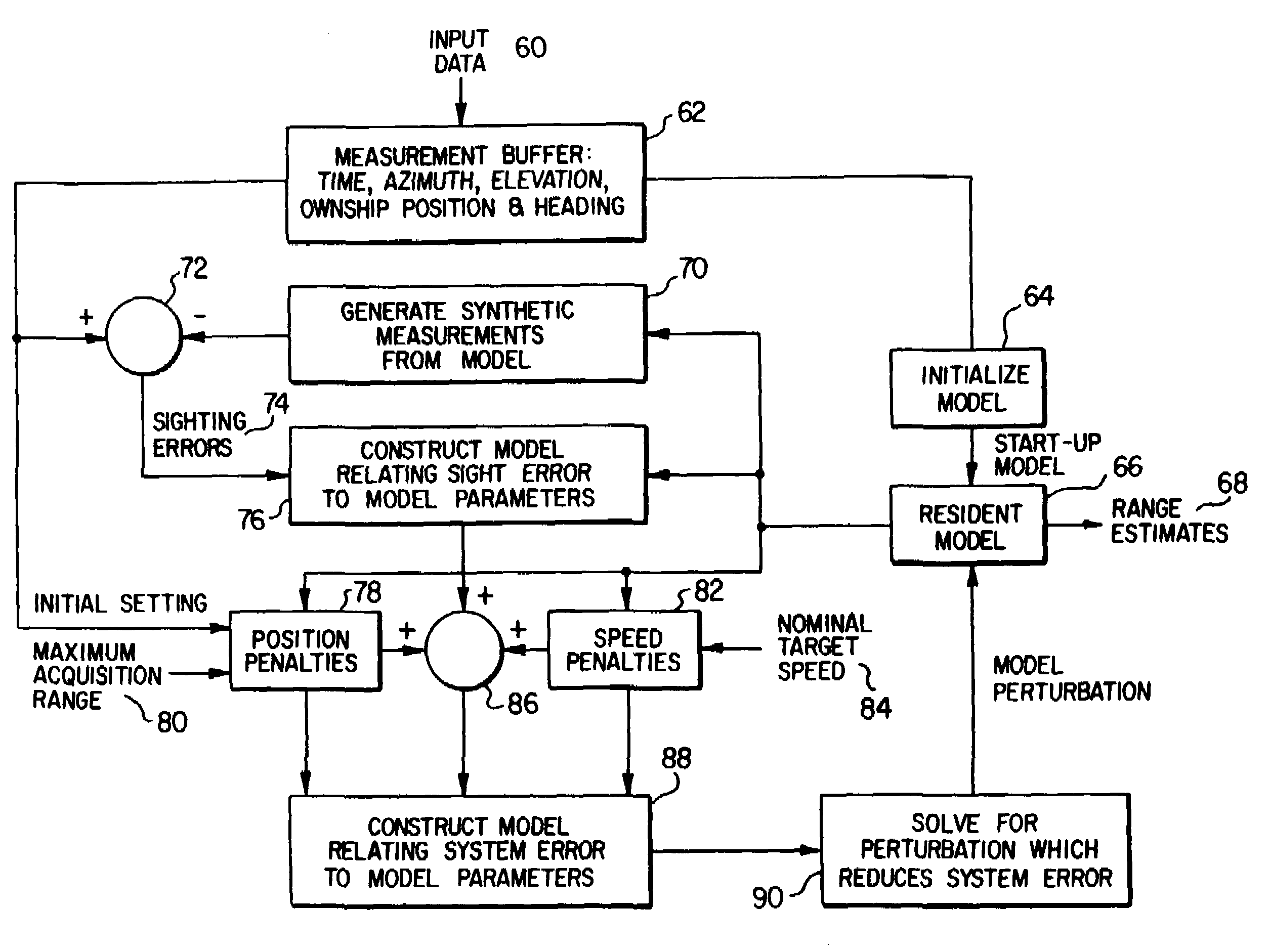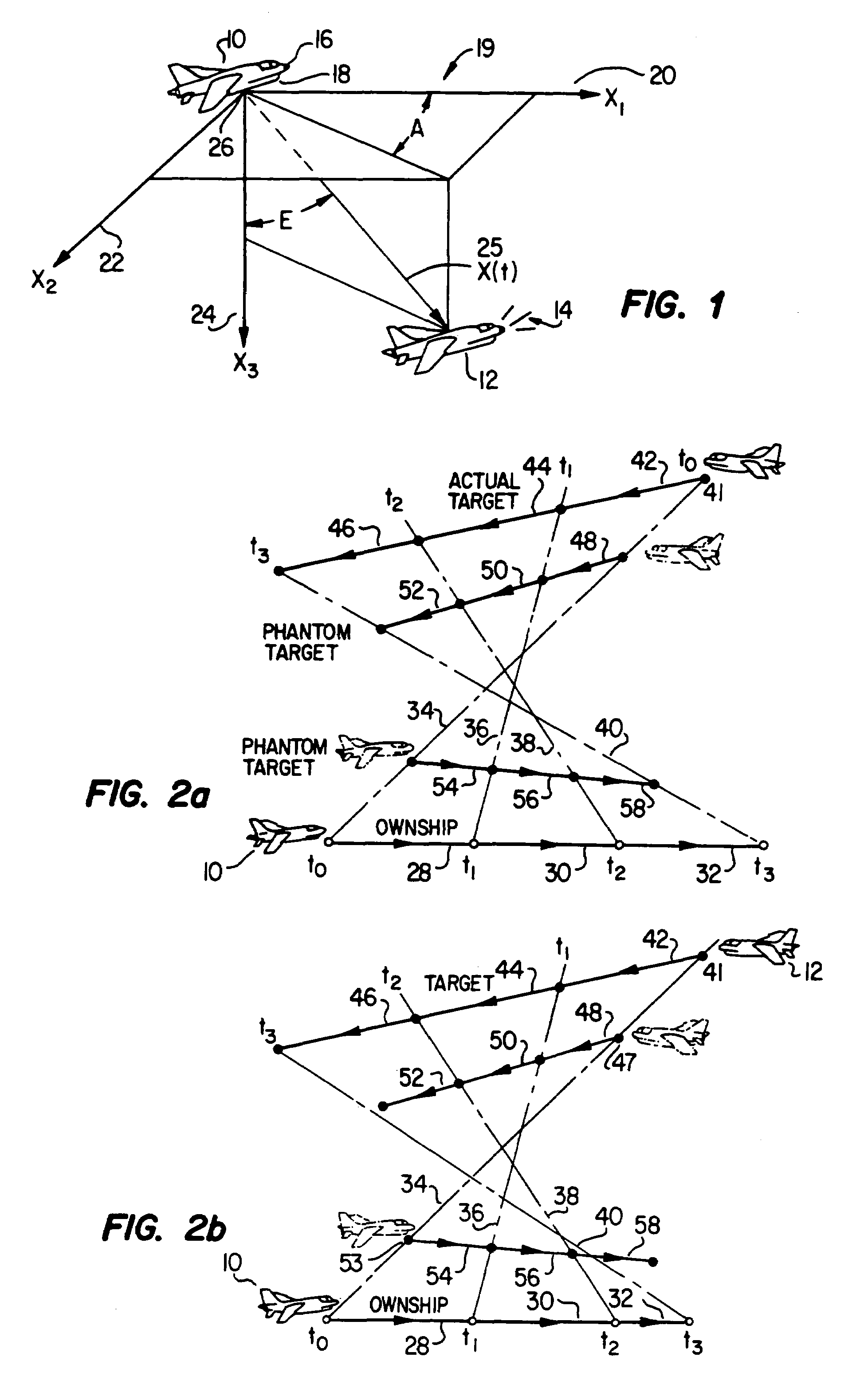Method and apparatus for air-to-air aircraft ranging
a technology for air-to-air aircraft and ranging, which is applied in the direction of navigation instruments, instruments for comonautical navigation, instruments, etc., can solve the problems of large range estimation error, large range determination error, and to-air passive ranging, so as to reduce the error measurement, minimize the error measurement, and eliminate the disadvantages and problems.
- Summary
- Abstract
- Description
- Claims
- Application Information
AI Technical Summary
Benefits of technology
Problems solved by technology
Method used
Image
Examples
Embodiment Construction
[0022]The preferred embodiment of the present invention is best understood by referring to FIGS. 1–10 of the drawings, like numerals being used for like and corresponding parts of the various drawings.
[0023]FIG. 1 illustrates an aerial encounter between two aircraft. Ownship 10 desires to determine the range between itself and a second aircraft, target 12. Target 12 emits electromagnetic energy, generally indicated by the reference numeral 14. Ownship 10 contains directional receivers 16 operable to determine the angle-of-arrival of the incoming energy forces 14 at various times during a data collection and interval. In addition to the bearing measurements, fixes of ownship's position and heading are monitored by the on-board inertial navigation system (INS) 18. A rectangular coordinate system 19 having an X1 axis 20, an X2 axis 22, and an X3 axis 24, has its center 26 located at ownship. The coordinate system 19 moves in pure translation with ownship 10; however, the directions of ...
PUM
 Login to View More
Login to View More Abstract
Description
Claims
Application Information
 Login to View More
Login to View More - R&D
- Intellectual Property
- Life Sciences
- Materials
- Tech Scout
- Unparalleled Data Quality
- Higher Quality Content
- 60% Fewer Hallucinations
Browse by: Latest US Patents, China's latest patents, Technical Efficacy Thesaurus, Application Domain, Technology Topic, Popular Technical Reports.
© 2025 PatSnap. All rights reserved.Legal|Privacy policy|Modern Slavery Act Transparency Statement|Sitemap|About US| Contact US: help@patsnap.com



